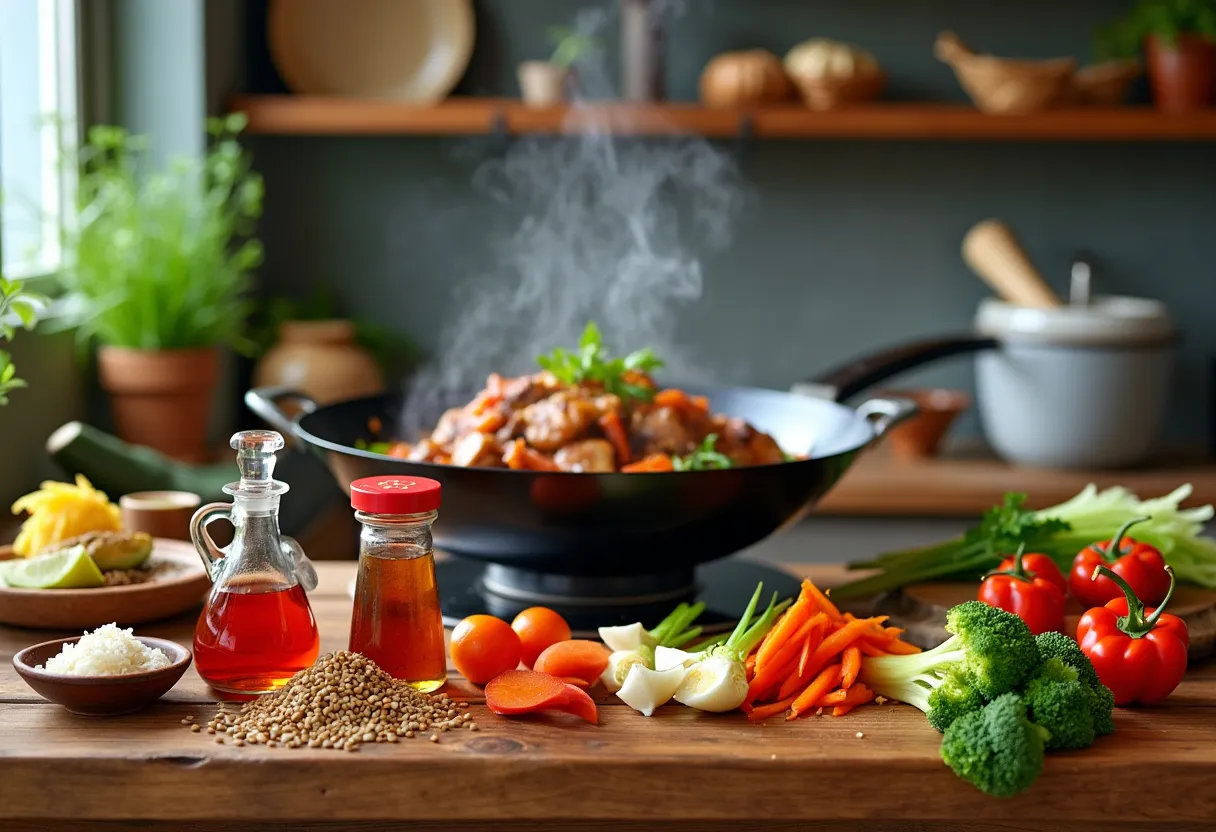
Exploring the Spice: A Review of Essential Korean Ingredients, Tips, and Tricks for Perfect Fusion Cooking
Published on 9/21/2024
David Kim • 9/21/2024
As someone who grew up in Seoul, South Korea, and later settled in the vibrant city of Sydney, Australia, my culinary journey has been a fascinating blend of tradition and innovation. This unique fusion has inspired me to dive deep into Korean ingredients and explore their potential in every kitchen. Today, I want to share with you some insights and tips on how you can skillfully incorporate these ingredients into your own culinary creations.
Must-Have Korean Ingredients for Fusion Cooking
The first step in mastering Korean-Australian fusion cooking is getting familiar with the essential ingredients that add that unique, bold flavor to dishes. Here are my top picks:
- Gochujang: This sweet and spicy fermented chili paste is a staple in Korean kitchens. Its rich umami flavor base makes it ideal for marinating meats or adding depth to a variety of sauces.
- Soy Sauce: Although commonly used worldwide, Korean soy sauce has a slightly sweeter profile that makes it perfect for blending flavors in both stir-fries and dressings.
- Sesame Oil: The nutty, aromatic quality of sesame oil is irreplaceable, making it an ideal finishing touch for everything from cold noodle dishes to warm, comforting stews.
- Kimchi: This iconic fermented cabbage brings a delightful tang and crunch, which can elevate even the simplest of dishes, like fried rice or omelets, into something extraordinary.
Culinary Tips for Blending Flavors
Balance is Key
One of the most important concepts in fusion cooking is the balance of flavors. Sweet, salty, spicy, and sour must harmonize for the perfect bite. Don’t be afraid to experiment with different ingredients to find what works best for your palate.
Layering Flavors for Depth
When working with the complexity of Korean flavors, consider starting with a base of gochujang or soy sauce and build upon it with aromatics like ginger, garlic, and scallions. Add splashes of rice vinegar for acidity and finish with sesame oil for a polished, complete flavor.
Common Tools for Efficiency and Perfection
Incorporating Korean techniques isn't just about the ingredients; the tools you use in the kitchen play a crucial role too. Here are a few tools that can make execution smooth and successful:
- Wok: Ideal for high-heat cooking, giving your ingredients that delicious sear.
- Rice Cooker: A staple for perfectly cooked rice, an essential base for many dishes.
- Mortar and Pestle: Perfect for grinding spices and making pastes that burst with flavor.
Embracing Cultural Fusion in the Kitchen
One of the beautiful aspects of fusion cooking is the opportunity it provides to embrace and celebrate different cultures through food. By bringing together the bold and spicy tastes of Korean cuisine and the fresh and vibrant ingredients available in Australia, you can create meals that honor tradition while paving the way for new culinary experiences. This journey not only deepens your appreciation of food but also brings family and friends together to enjoy each other's backgrounds and stories.
Join Me in the Fusion Journey
My passion for Korean-Australian fusion cooking has only grown as I've explored and experimented with these incredible ingredients. Whether you're a seasoned cook or just starting out, I encourage you to dive into the rich world of Korean cuisine and try your hand at combining it with the beautiful produce we have here in Australia. For those interested, my workshops in Sydney offer an interactive way to learn and share these delightful culinary secrets. Let's embark on this delicious journey together and create unforgettable meals that celebrate our diverse culinary heritage.
David Kim
Chef and Family Recipe Developer | I've been cooking
David was born in Seoul, South Korea, but moved to Sydney, Australia, with his family when he was a teenager. His parents opened a small Korean BBQ restaurant, where David developed a love for the fusion of Korean and Australian cuisines. Over the years, David has mastered the art of blending the bold, spicy flavors of Korean cooking with the fresh, vibrant ingredients of Australia. Now married with three children, David focuses on creating family-friendly, fusion recipes that are quick, easy, and delicious. He also hosts cooking workshops in Sydney to teach Korean-Australian fusion cooking.